John William Baird was born on 3 August 1924 on a soldier settlement farm in
Victoria's Mallee region but, as was the case with many soldier
settlers, the farm did not succeed and the family was forced to
move to Melbourne. There, Baird commenced his architectural
studies at
the Royal Melbourne Technical College (now RMIT) under a rehabilitation
course, and subsequently completed a Diploma of Architecture at the
University of Melbourne in 1956. He obtained a position in the
prominent Melbourne architectural office of Bates, Smart &
McCutcheon, where he was primarily engaged on multi-storey commercial
projects. At the same time, he found time to design a house for
himself and his wife at Beaumaris, and also to win a commendation in
the 1957 design competition for the "Ideal Family Home".
This would be the first of many architectural commendations that
Baird would receive during his career.
Establishing his own practice, Baird initially concentrated on residential commissions, many of which were located in the bayside suburbs near where he lived in Beaumaris. Amongst these local projects were a distinctive purpose-built arts and crafts centre at the Beaumaris North State School, where his children were students. Baird continued to maintain a successful sole practice during the 1960s, save for a brief partnership with Salvador Bracero, a Sydney-trained Spanish emigre who taught at the RMIT School of Architecture (where Baird himself would lecture for many years). Amongst the few known projects designed under the banner of Bracero & Baird was another successful competition entry: a scheme for a group housing development in South Australia, which received a commendation by the judges.
While Baird's association with Bracero was short-lived, he went on to establish a more successful and enduring partnership with architect John Cuthbert in 1969. This association commenced with further success in a design competition - this time, winning first prize for a housing development scheme sponsored by the State Electricity Commission. Subsequently, the new partnership concentrated primarily on residential projects, several of which received architectural commendations. Baird not only won the Bronze Medal for the RAIA House of the Year in 1973 (for the Leonard French House & Studio in Beaumaris), but received citations in the same award for 1975 (for the so-called Low Energy House in Flinders) and again in 1976 (for the Smith House in Beaumaris). Towards the end of the decade, Baird's firm (known initially as Baird & Cuthbert and later as Baird, Cuthbert & Partners) was re-badged as Baird Cuthbert Mitchell Pty Ltd, with the admission of Colin Mitchell as a partner. Several now-prominent Melbourne architects gained their early experience in the office of Baird Cuthbert Mitchell in the early 1980s, including Grant Amon and Leon Meyer. During this period, the office was widely acknowledged as pre-eminent leaders in the field of energy-efficient residential design. In 1980, a house designed by the firm at Hamilton won the RAIA (Victoria) Award for Category E: Energy Efficient Building.
In 1982, John Baird was commissioned to design a tea-house at Ricketts Point, Beaumaris, which was required to be assembled from pre-made components that could be securely stored on the site during construction. The success of that project prompted Baird to adopt a similar approach in residential design and he formed his own project housing company, Fairweather Housing, to specialise in energy- and cost-efficient kit homes. Baird subsequently developed two parallel streams: a Design Series, where dwellings were created for individual clients using a library of standard components, and a Peake Series, providing demountable dwellings based on a modular panel system. By 1993, more than 200 Fairweather Homes had been erected; today, examples can be found from Footscray to Templestowe to French Island. The company's range of dwellings brought Baird another swag of industry awards, including an Australian Design Award (1989), an MBA Award (1991) and a National Energy Award (1992). During the 1990s, Baird introduced Fairweather Homes to the overseas market when several housing projects were launched in Indonesia.
In 1984, Baird consolidated his long-held interest in energy-efficient residential design when he published a book entitled By Design: Changing Australian Houses, in which he attempted to answer the question: "what alternatives do we have in housing which will be more economic in resource use, will increase housing access and diversity, and provide a more human and inspiring environment?".
In later life, Baird and his family moved to the small settlement of Smiths Beach, on Phillip Island, where he remained active both professionally and in local affairs. He designed numerous buildings on the island, including the Information Centre at Newhaven and several houses. As a founding member of the Smiths Beachcomber Association, he advised on the conservation of sensitive coastal reserves and, with his family, designed and laid out a pedestrian path down the cliffs to the beach. In 2007, Baird published a novella, entitled A Storm of Birds, partly inspired by his childhood in the Mallee. He died three years later, on 8 October 2010, at Rhyll.
Establishing his own practice, Baird initially concentrated on residential commissions, many of which were located in the bayside suburbs near where he lived in Beaumaris. Amongst these local projects were a distinctive purpose-built arts and crafts centre at the Beaumaris North State School, where his children were students. Baird continued to maintain a successful sole practice during the 1960s, save for a brief partnership with Salvador Bracero, a Sydney-trained Spanish emigre who taught at the RMIT School of Architecture (where Baird himself would lecture for many years). Amongst the few known projects designed under the banner of Bracero & Baird was another successful competition entry: a scheme for a group housing development in South Australia, which received a commendation by the judges.
While Baird's association with Bracero was short-lived, he went on to establish a more successful and enduring partnership with architect John Cuthbert in 1969. This association commenced with further success in a design competition - this time, winning first prize for a housing development scheme sponsored by the State Electricity Commission. Subsequently, the new partnership concentrated primarily on residential projects, several of which received architectural commendations. Baird not only won the Bronze Medal for the RAIA House of the Year in 1973 (for the Leonard French House & Studio in Beaumaris), but received citations in the same award for 1975 (for the so-called Low Energy House in Flinders) and again in 1976 (for the Smith House in Beaumaris). Towards the end of the decade, Baird's firm (known initially as Baird & Cuthbert and later as Baird, Cuthbert & Partners) was re-badged as Baird Cuthbert Mitchell Pty Ltd, with the admission of Colin Mitchell as a partner. Several now-prominent Melbourne architects gained their early experience in the office of Baird Cuthbert Mitchell in the early 1980s, including Grant Amon and Leon Meyer. During this period, the office was widely acknowledged as pre-eminent leaders in the field of energy-efficient residential design. In 1980, a house designed by the firm at Hamilton won the RAIA (Victoria) Award for Category E: Energy Efficient Building.
In 1982, John Baird was commissioned to design a tea-house at Ricketts Point, Beaumaris, which was required to be assembled from pre-made components that could be securely stored on the site during construction. The success of that project prompted Baird to adopt a similar approach in residential design and he formed his own project housing company, Fairweather Housing, to specialise in energy- and cost-efficient kit homes. Baird subsequently developed two parallel streams: a Design Series, where dwellings were created for individual clients using a library of standard components, and a Peake Series, providing demountable dwellings based on a modular panel system. By 1993, more than 200 Fairweather Homes had been erected; today, examples can be found from Footscray to Templestowe to French Island. The company's range of dwellings brought Baird another swag of industry awards, including an Australian Design Award (1989), an MBA Award (1991) and a National Energy Award (1992). During the 1990s, Baird introduced Fairweather Homes to the overseas market when several housing projects were launched in Indonesia.
In 1984, Baird consolidated his long-held interest in energy-efficient residential design when he published a book entitled By Design: Changing Australian Houses, in which he attempted to answer the question: "what alternatives do we have in housing which will be more economic in resource use, will increase housing access and diversity, and provide a more human and inspiring environment?".
In later life, Baird and his family moved to the small settlement of Smiths Beach, on Phillip Island, where he remained active both professionally and in local affairs. He designed numerous buildings on the island, including the Information Centre at Newhaven and several houses. As a founding member of the Smiths Beachcomber Association, he advised on the conservation of sensitive coastal reserves and, with his family, designed and laid out a pedestrian path down the cliffs to the beach. In 2007, Baird published a novella, entitled A Storm of Birds, partly inspired by his childhood in the Mallee. He died three years later, on 8 October 2010, at Rhyll.
Select List of Projects
John Baird
| 1957 1960 1965 1966 1967 | Residence for self, Hume Street, Beaumaris Residence, Mariemont Avenue, Beaumaris Aged Persons' Housing for the Brotherhood of St Laurence, Carrum Downs Residence, Balcombe Road, Beaumaris Residence, Vista Grove, Toorak Arts & Crafts Centre, Beaumaris North State School, Wood Street, Beaumaris Residence, Sandown Street, Brighton |
Baird & Bracero
| 1963 1965 | Holiday residence, Clarendon Street, Dromana Housing development (Clovercrest Estate), South Australia [competition entry] |
Baird & Cuthbert (John Baird, Cuthbert & Partners)
| 1969 1970 1972 1973 1975 1976 1977 | Housing development for State Electricity Commission, Melbourne [competition entry] Residence, Higham Road, Hawthorn East Residence, Elphinstone Grove, Kew Holiday residence, Arthurs Seat Road, Main Ridge Residence and studio, Alfred Street, Beaumaris Residence (Low Energy House), Musk Creek Road, Flinders Rehabilitation Project for Housing Commission of Victoria, Nelson Road, South Melbourne Residence, Surf Avenue, Beaumaris Residence for the Age/RAIA Small Homes Service [V3199] Residence, Talinga Crescent, Shepparton |
Baird, Cuthbert, Mitchell Pty Ltd
| 1978 1979 1980 1981 | Residence, Kangaroo Ground Residence for self, South Melbourne Residence, Leura Road, Hamilton Duplex residence for Housing Industry Association, Broadmeadows Communal leisure house, Wonthaggi Residence, Ararat |
Fairweather Homes
| 1991 1992 1996 1998 | Holiday residence (Peake 1), Flinders Residential units for Bias Putih Resort, East Bali, Indonesia Housing development for PT Freeport Indonesia, Irian Jaya, Indonesia [project only] Holiday residences, (Peake 3), Echuca-Moama |
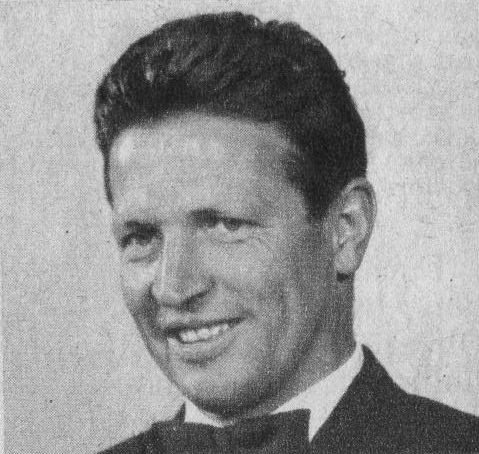 | |
| John Baird, architect, as he appeared in the late 1950s |
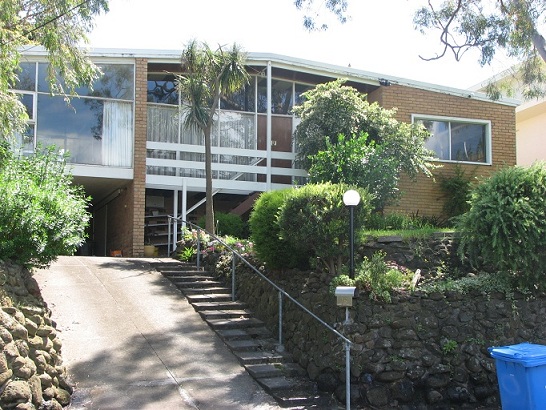 | |
| Ross Residence at Mariemont Avenue, Beaumaris (1957) (photograph by Simon Reeves, Built Heritage Pty Ltd) |
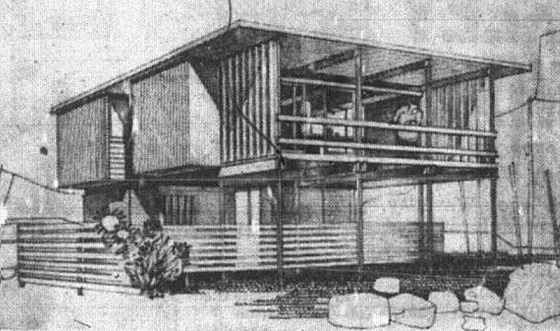 | |
| Holiday residence in Dromana by Baird & Bracero (1963) |
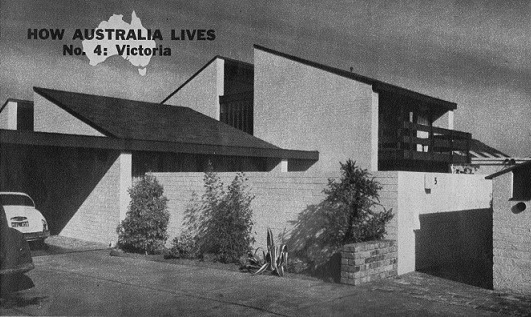 | |
| Paynter Residence in Sandown Street, Brighton (1967) |
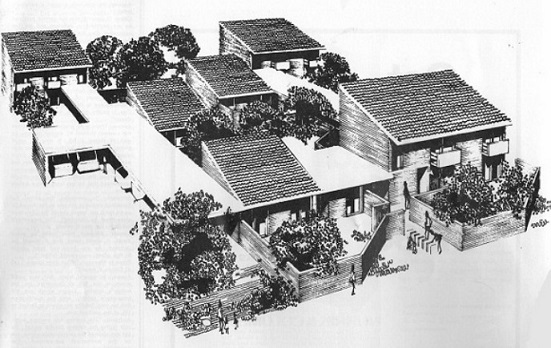 | |
| Baird & Cuthbert entry in SEC housing competition (1969) |
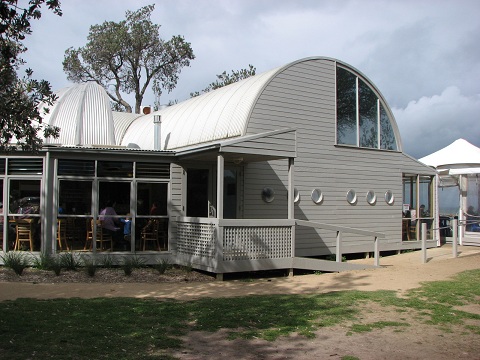 | |
| John Baird's Ricketts Point Teahouse, Beaumaris (1982) (photograph by Simon Reeves, Built Heritage Pty Ltd) |
| Further Reading "Vale: John William Baird 3/8/1924-8/10/2010", SBA Newsletter, Summer 2010, p 2. John Baird, By Design: Changing Australian Housing. Melbourne: A E Press, 1984. John Baird. "Fairweather Homes: Ten Years with Housing Systems". Architect. April 1993, p 11. John Baird, A Storm of Birds. Carlton North: Black Jack Press, 2007. www.fairweatherhomes.com.au |
